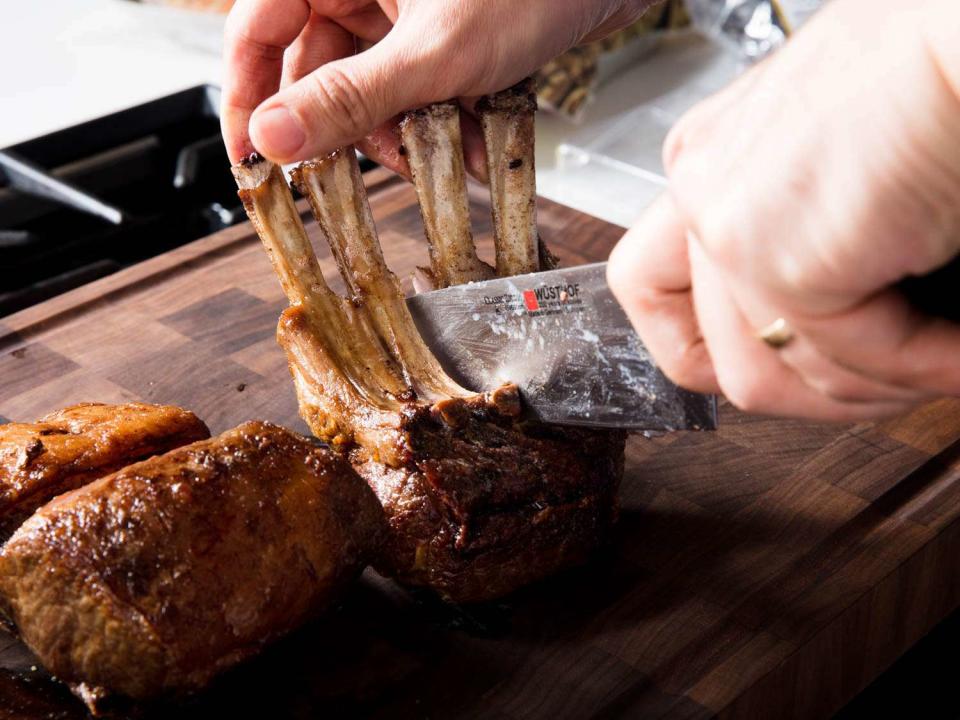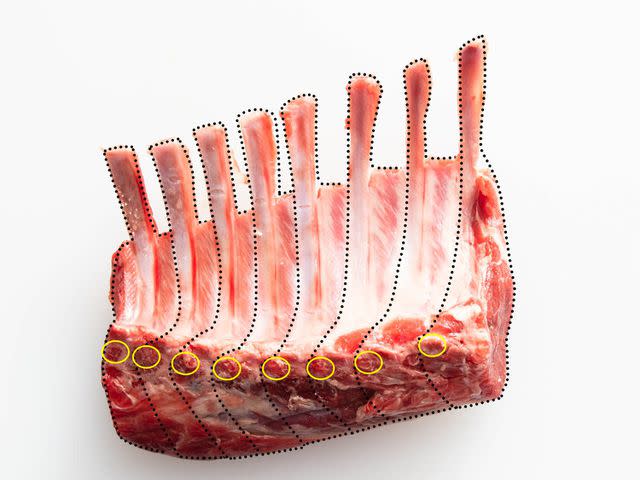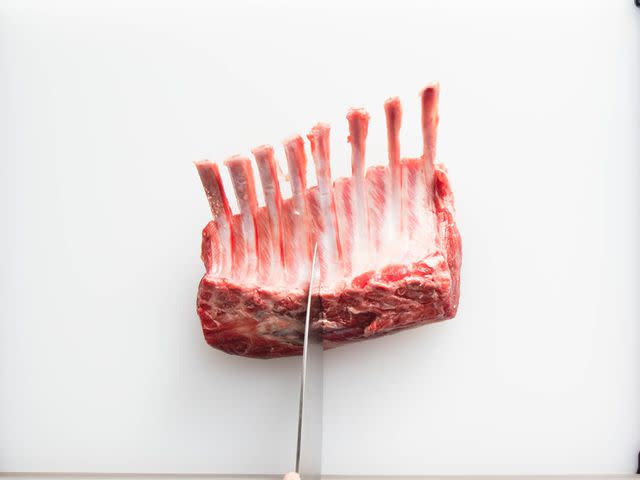How to Carve a Rack of Lamb the Right Way
An improperly carved rack of lamb will leave some portions with too much meat and others with not enough. Here's how to make sure you divide and conquer evenly.

Serious Eats / Vicky Wasik
Carving a rack of lamb—whether pan-roasted or sous vide—isn't as simple as sliding a knife between the bones. Whether you're dividing a larger rack into smaller ones before cooking (like, say, turning an eight-bone rack into two four-bone racks) or slicing individual chops after cooking, you need to pay attention to how the rib bones and loin of meat align in order to divide them evenly.

Serious Eats / Vicky Wasik
The ribs in a rack of lamb curve, which leaves more meat on one side of each rib than the other. Carve accordingly.Taking a closer look at a rack of lamb, you'll notice that the ribs curve at an angle, which means that they arc along the loin in a way that makes dividing it evenly more difficult. If you aren't mindful of this, you're likely to divide the rack improperly and end up with some rib bones that have almost no meat attached and others that have too much.
In the above photo, the yellow circles indicate where each rib terminates; as you can see, the bones don't run in a straight line. Whether the bones curve to the right or left depends on which side of the lamb the rack came from. In the above example, you can see that the bones curve down and to the left, which leaves the loin right-shifted in relation to them.
Look at the rightmost rib: You can see that the meaty loin extends out to the right from it. This also means that the leftmost rib has little to no extra meat to the left of it. If you divide this rack into individual chops by slicing between the bones, and the knife rides closer to the bone that's to its left, that rightmost rib will end up with an extra-thick medallion of meat on it, while the leftmost rib will have a thin flap dangling pitifully from it.
Therefore, the best way to carve the above rack is to ride the knife along the bones to the right; that will leave enough meat attached to the leftmost rib and an equal share on the rightmost one. Remember that these directions will be reversed on racks from the opposite side of the lamb.
The same logic applies if you're splitting an eight-bone rack in half. If you ride the knife along the wrong bone, one of the four-bone racks will end up quite a bit bigger than the other, even though each has four bones on it.

Serious Eats / Vicky Wasik
Make sure to divide an eight-bone rack in the right place; otherwise, one four-bone half will end up with more meat than the other.The lesson here is that since racks of lamb aren't labeled with which side of the animal they came from, we have to look first to determine the curvature of the bones before making our cuts. That way, no one will feel like they got—erm—ribbed off.
May 2019
Read the original article on Serious Eats.

